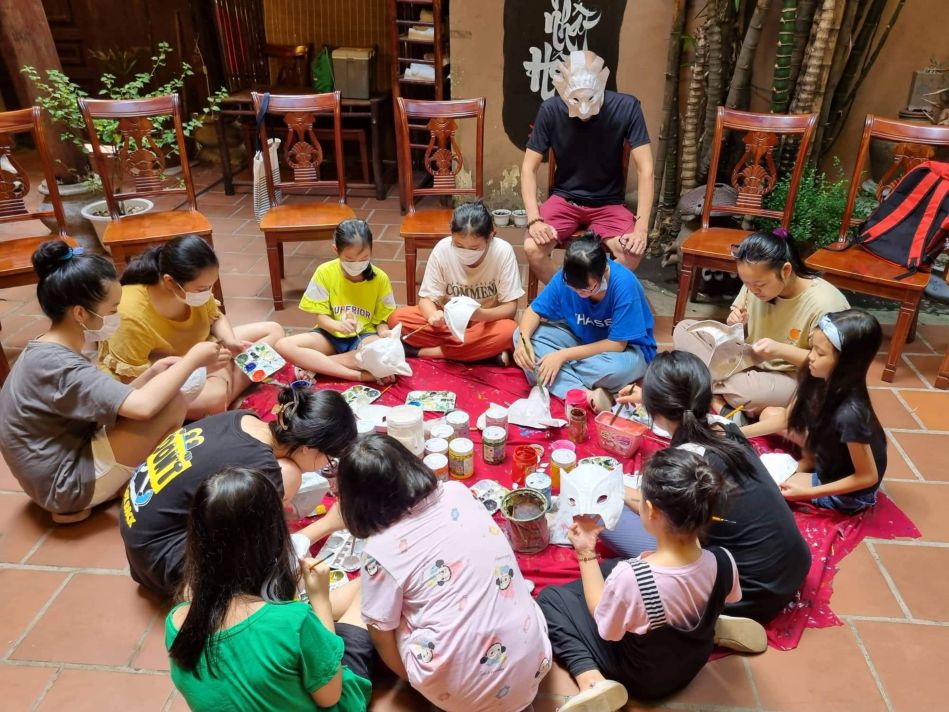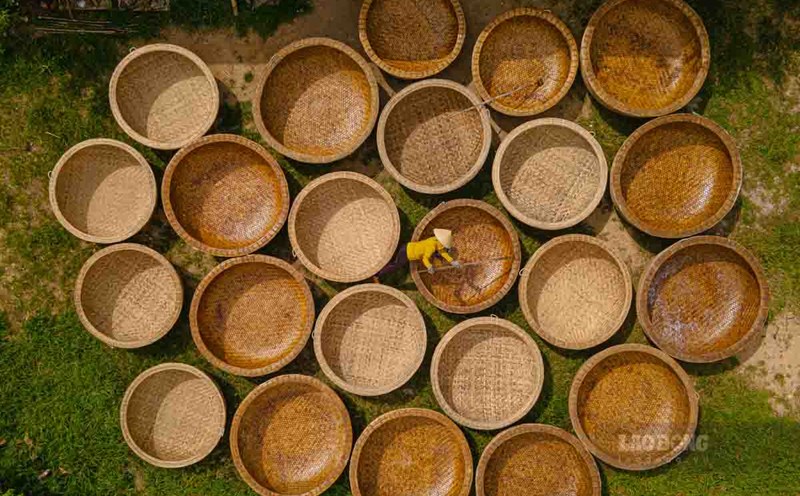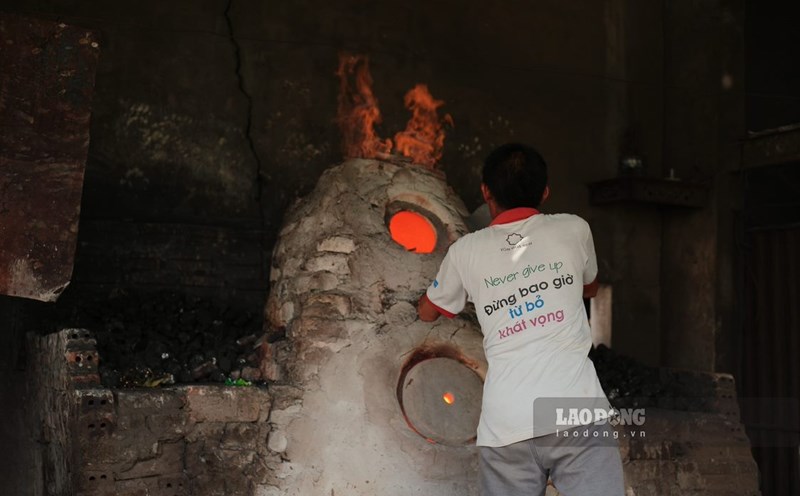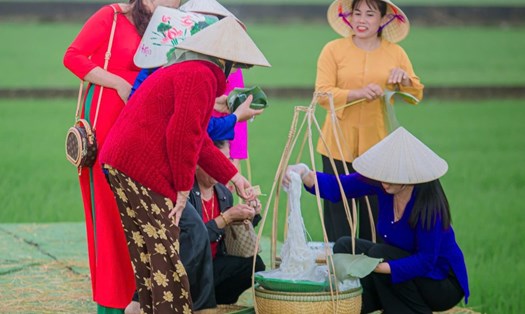Not only a toy that has been associated with the childhood of many generations of Vietnamese people, a foam mask is also a symbol of folk culture, carrying the shape of familiar characters such as Uncle Teu, Mr. Dia, the teacher of costumes, the paper tiger... And in an effort to preserve that traditional beauty, there is a young person who is quietly continuing - Mr. Ngo Quy Duc, 37 years old, in Hanoi.
fate comes to the profession
I came to this profession as a fate, but the more I did it, the more I felt it was an important part of my life. Each mask is not only a handmade product but also a part of childhood memories, an unforgettable cultural image - Mr. Duc confided.
More than 20 years ago, from being a curious to learn, Duc became the only student that artisan Hoa and his wife, Ms. Dang Huong Lan, trusted to pass on the family profession that their family had preserved for more than four decades.
The process of making paper masks is not simple. From the stitching the paper to the mold to paint completely manually. The paper is teared, soaked in water, and then each layer is compensated on the mold with a lake cooked from cassava flour. When dry, the mask is removed from the mold and turns to the decoration. According to Mr. Duc, this is the most difficult step when blowing soul for each face, every eye. For those who work, each mask is not the same from the color to the drawing with its own breath, personality and cultural depth.

Among dozens of mask models, the character that makes Duc most attached is still Uncle Teu, a familiar image in water puppetry with a humorous, kind smile.
"Uncle Teu is a symbol of optimism, closeness, and hometown. I always try to keep that smile, that spirit in each product, he said.
Continuing and "Conserving" the profession
Amidst a volatile market, as industrial toys are dominating and traditional crafts are becoming increasingly rare, Duc has never intended to stop. On the contrary, he proactively brought recycled masks back to life by organizing workshops, participating in fairs, and most importantly, telling the story of each mask.
Duc shared: When seeing handmade products with their own eyes and hands, many adults reminisce about their childhood. Children are curious and excited to paint with their own hands and know the meaning of each character. That was when I knew I was doing the right thing.
Not only preserving traditional techniques, Duc also strives to innovate products to suit modern tastes. There are currently more than 30 masks with all shapes from classic to modern such as hackers, spider faces... but all are done by hand, in accordance with traditional spirit.
The path to preserving the profession has never been easy. There are times when the market is gloomy, plastic toys are everywhere, poor quality products impersonate, causing real people to be affected. However, the couple of artisans Hoa - Lan and Mr. Duc are still steadfast in the principle of putting quality and heart first.
We never run after quantity. Making a mask requires both hands and the heart to be able to convey the soul of Vietnamese culture, Ms. Lan once said.
Currently, Ngo Quy Duc is not only the heir but also a bridge for the reed paper masks to step out of the nostalgic space and integrate into contemporary life. He uses social networks to tell cultural stories, using creative activities to bring masks closer to the public, especially young people. He also cherishes the desire to bring this traditional handicraft product to the world as a representative of Vietnamese culture.

Curestering the craft is not about keeping the old in a mechanical way, but about preserving the soul of culture in every drawing feature, every layer of paper. I want the world to know that Vietnamese people have simple toys but rich in soul, and each product is a true work of art, Mr. Duc recalled.
Amidst the rush of life, the small attic of the artisans Hoa - Lan and their passionate student Ngo Quy Duc still lights up, where the layers of paper continue to be renewed, the smiles are still painted from loving hands. Since then, an ancient toy has been quietly reviving, not only a symbol of childhood, but a breath of Vietnamese culture in every breath of time.







